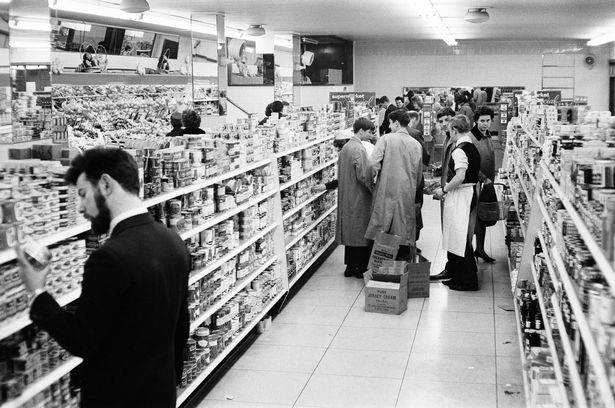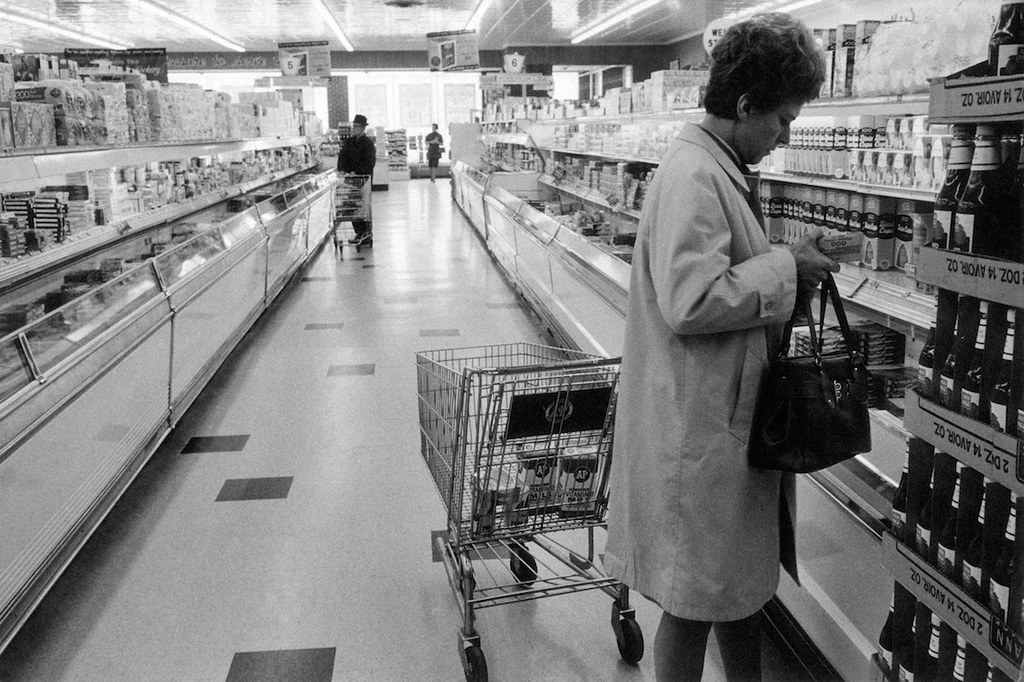Strong in-store and online sales continue to benefit center store, but supply chain shortfalls linger

As grocery customers return to more in-store shopping, it’s clear that the online grocery shopping they embraced during the pandemic isn’t going anywhere any time soon.
Over 40% of shoppers currently order groceries online, according to Acosta research and 95% of them are ordering the same or more online than they did pre-COVID. “Looking ahead, online growth will slow as the vaccine allows shoppers to return to stores more comfortably,” acknowledged Jana Davis, senior director, business intelligence, Acosta. “However, with so many people now accustomed to the convenience of curbside pickup or home delivery, online grocery shopping will remain.” In fact, she added, eMarketer estimates that online grocery spend will reach $100 billion for the first time in 2021 and rise to as much as $200 billion over the next four to five years.
That bodes well for center store categories, which have surged online over the past year. Customers are far more comfortable buying items like paper goods, pet food, shelf-stable food and beverages and cleaning supplies online than they are trusting their fresh purchases to e-commerce.
“The widespread availability of e-commerce and the increased adoption rates post-COVID have influenced store guests’ behaviors and expectations,” said Joe McQuesten, senior VP, merchandising for retailer and distributor SpartanNash. “It is easier to trust the freshness and quality of center store items online, regardless of the retailer, and this commoditizes the center store portion of the basket more than the fresh. To differentiate themselves, retailers need to be creative with their digital center store experience by offering expanded ‘digital-only’ items and offers, unique pack sizes, an array of fulfillment channels and recurring order options.”
Supply chain challenges
Still, despite the continued elevated sales in center store — or perhaps because of that — not all the news is good.
“Right now, we expect center store categories to be largely impacted by supply chain shortfalls,” said McQuesten. “As the greater population returns to a post-COVID normal, we are just starting to see the economic effects of the pandemic, and one of those is a labor shortage affecting manufacturing and logistics. This is continuing to put pressure on an already fragile supply chain that hasn’t fully recovered from the COVID buying habits.”
Acosta’s Davis agreed. “We are witnessing huge pressure on the CPG supply chain this year that may not only impact shelf availability but will also drive up costs that will be passed on from the manufacturer to the retailer to the consumer,” she said. Still, on the positive side, these supply chain challenges create an opportunity for retailers to rethink center store.
“Both manufacturers and retailers will continue to focus on profitable sales growth, which requires increased focus on the role of innovation, efficient assortment, supply chain efficiency, private label strategy and demand creation,” Davis said.
Center Store Categories include shelf-stable groceries, frozen foods, nonfood and HBC, snacks and beverages. We also highlight the top center store product categories by sales, as well as the biggest sales gains and declines over the past year.
Fresh Categories include produce, dairy, meat, bakery and deli/prepared foods. We also feature the top fresh product categories by sales, as well as the biggest sales gains and those with declines or the lowest growth over the past year.

TOP-SELLING CENTER STORE AND GROCERY ITEMS
| Multi-outlet dollar sales | % change vs. year ago | Supermarket dollar sales | % change vs. year ago | ||
|---|---|---|---|---|---|
|
1
|
Carbonated beverages
|
23.3B
|
10.8
|
13.0B
|
10.5
|
|
2
|
Salty snacks
|
22.8B
|
8.2
|
12.7B
|
7.6
|
|
3
|
Beer/ale/alcoholic cider
|
20.4B
|
7.8
|
14.2B
|
9.9
|
|
4
|
Bottled water
|
15.1B
|
8.1
|
8.2B
|
9.5
|
|
5
|
Wine
|
13.7B
|
6.2
|
10.6B
|
3.6
|
|
6
|
Pet food
|
12.8B
|
-0.2
|
4.7B
|
0
|
|
7
|
Chocolate candy
|
12.6B
|
6.2
|
4.6B
|
7.7
|
|
8
|
Coffee
|
10.7B
|
4
|
5.9B
|
3.6
|
|
9
|
Dinners/entrees-frozen
|
10.4B
|
7
|
6.0B
|
6.2
|
|
10
|
Toilet tissue
|
9.8B
|
-5.8
|
3.4B
|
-8.7
|
|
11
|
Cigarettes
|
9.4B
|
-16.5
|
3.7B
|
-0.9
|
|
12
|
Vitamins
|
9.4B
|
11.3
|
1.9B
|
9.3
|
|
13
|
Cookies
|
8.9B
|
2.6
|
4.8B
|
2.7
|
|
14
|
Cold cereal
|
8.8B
|
-2.7
|
5.1B
|
-3.1
|
|
15
|
Breakfast meats
|
8.1B
|
9.2
|
5.3B
|
7.9
|
|
16
|
Laundry detergent
|
7.9B
|
-0.2
|
2.4B
|
-3.8
|
|
17
|
Crackers
|
7.6B
|
0.6
|
4.8B
|
1.2
|
|
18
|
Yogurt
|
7.6B
|
2.5
|
5.3B
|
1.5
|
|
19
|
Soap
|
7.2B
|
21.3
|
1.9B
|
18.2
|
|
20
|
Seafood-frozen
|
7.2B
|
24
|
4.2B
|
24.5
|
|
21
|
Ice cream/sherbet
|
7.1B
|
5.6
|
5.3B
|
6.3
|
|
22
|
Spirits/liquor
|
6.9B
|
8.9
|
4.7B
|
10.4
|
|
23
|
Juices/drinks
|
6.7B
|
8.4
|
4.4B
|
7.1
|
|
24
|
Meat (RFG)
|
6.7B
|
7.2
|
3.4B
|
11.5
|
|
25
|
Paper towels
|
6.5B
|
4.5
|
2.5B
|
3.1
|
|
26
|
Soup
|
6.5B
|
-2
|
4.3B
|
-3.5
|
|
27
|
Fresh eggs
|
6.4B
|
3.5
|
4.3B
|
1.7
|
|
28
|
Luncheon meats
|
6.2B
|
3.4
|
3.8B
|
4.4
|
|
29
|
Bottled juices (shelf-stable)
|
6.2B
|
9.1
|
3.4B
|
8.9
|
|
30
|
Novelties-frozen
|
6.0B
|
15.4
|
3.9B
|
15.4
|
|
31
|
Non-chocolate candy
|
5.9B
|
5.3
|
1.9B
|
9.8
|
|
32
|
Pizza-frozen
|
5.9B
|
5.2
|
3.6B
|
3.1
|
|
33
|
Spices/seasonings
|
5.5B
|
17.6
|
3.7B
|
17.7
|
|
34
|
Snack bars/granola bars
|
5.4B
|
-4.6
|
2.7B
|
-5.1
|
|
35
|
Pet supplies
|
5.2B
|
10.7
|
1.0B
|
12.4
|
|
36
|
Food & trash bags
|
5.0B
|
2.7
|
1.8B
|
0.5
|
|
37
|
Sports drinks
|
4.8B
|
17.5
|
2.4B
|
16.4
|
|
38
|
Diapers
|
4.8B
|
-2.8
|
827M
|
-8.5
|
|
39
|
Cups & plates
|
4.8B
|
7.7
|
1.6B
|
7.6
|
|
40
|
Snack nuts/seeds/corn nuts
|
4.8B
|
4.1
|
2.4B
|
7
|
|
41
|
Poultry-frozen/RFG
|
4.8B
|
3.2
|
2.7B
|
3
|
|
42
|
Creams/creamers
|
4.8B
|
9.2
|
3.3B
|
8.4
|
|
43
|
Household cleaner
|
4.7B
|
15.5
|
1.4B
|
4.4
|
|
44
|
Energy drinks
|
4.6B
|
18.8
|
1.9B
|
20.3
|
|
45
|
Weight control
|
4.5B
|
10
|
1.5B
|
11.9
|
|
46
|
Skin care
|
4.4B
|
4
|
606M
|
-8
|
|
47
|
Baby formula/electrolytes
|
4.4B
|
-0.5
|
1.8B
|
-1.1
|
|
48
|
Processed poultry-frozen/RFG
|
4.3B
|
17.9
|
2.2B
|
14.3
|
|
49
|
Dinner sausage
|
4.2B
|
6.4
|
2.9B
|
6.2
|
|
50
|
Breakfast food-frozen
|
4.2B
|
12.6
|
2.3B
|
11.4
|
TOP 10 SALES GAINERS BY PERCENT
| Dollar Sales | % Change from last year | |
|---|---|---|
|
Home health care kits
|
$3.1B
|
181.10%
|
|
Premixed cocktails/coolers
|
$711.5M
|
58.20%
|
|
Household cleaner cloths
|
$1.5B
|
33.90%
|
|
Candles
|
$2.0B
|
32.20%
|
|
Sleeping remedies
|
$1.4B
|
28.90%
|
|
Other health care products
|
$580.5M
|
26.50%
|
|
External analgesic rubs
|
$1.1B
|
24.50%
|
|
Seafood-frozen
|
$7.2B
|
24.00%
|
|
Side dishes (RFG)
|
$4.1B
|
22.30%
|
|
Soap
|
$7.2B
|
21.30%
|
10 BIGGEST SALES DECLINERS BY PERCENT
| Dollar Sales | % Change from last year | |
|---|---|---|
|
Cold/allergy/sinus liquids
|
$1.0B
|
-34.40%
|
|
Cosmetics-lip
|
$584.7M
|
-26.20%
|
|
Smokeless tobacco
|
$515.0M
|
-19.90%
|
|
Cold/allergy/sinus tablets
|
$4.1B
|
-19.20%
|
|
Gum
|
$1.6B
|
-18.90%
|
|
Facial tissue
|
$1.4B
|
-17.40%
|
|
Hairspray/spritz
|
$522.3B
|
-16.80%
|
|
Cigarettes
|
$9.4B
|
-16.50%
|
|
Cosmetics-facial
|
$1.6B
|
-15.60%
|
|
Lip treatment
|
$824.9B
|
-12.80%
|
Mark Hamstra | Aug 06, 2021


